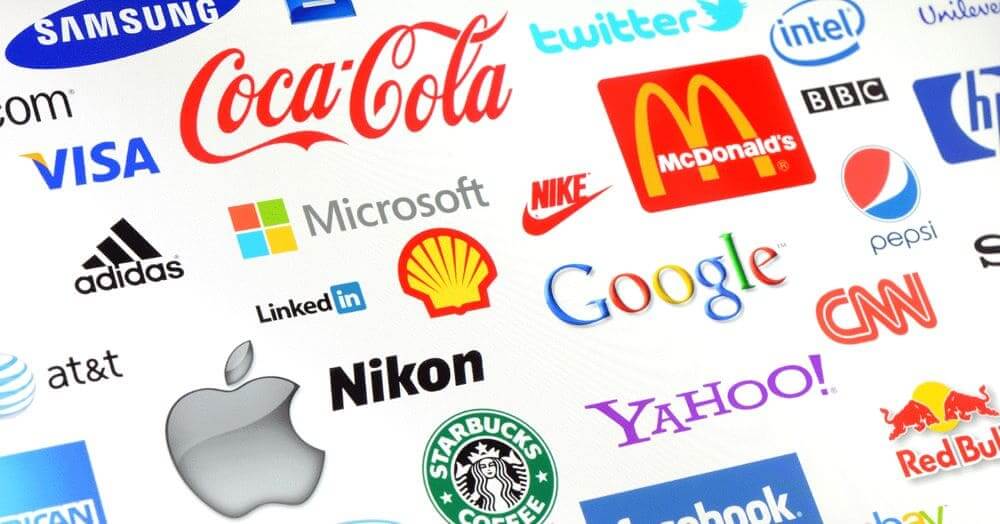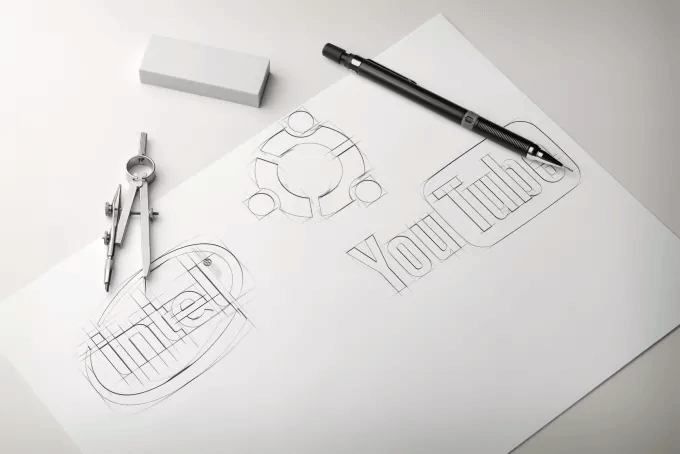In this article we take a look at The Ultimate Guide to Logo Design: From Concept to Creation.
Designing a logo is one of the most crucial steps in building a brand. A well-crafted logo not only makes your brand recognisable but also communicates its core values at a glance. In this ultimate logo design guide, we’ll walk you through step-by-step how to create a logo design that stands out, from initial concepts to final creation.
Whether you’re a start-up or rebranding an established business, this comprehensive guide has everything you need to know to design a memorable logo.
Table of Contents
Introduction to Logo Design

Logo design is more than just creating a visual mark for a brand—it’s about creating an identity that communicates a message, establishes trust, and builds brand recognition. A well-designed logo can help a business stand out from competitors, evoke the right emotions, and stay memorable in the minds of consumers.
In this comprehensive guide, we will delve into every aspect of logo design, from the concept stage to the final product, giving you a step-by-step process to craft logos that captivate and inspire.
Why Logo Design Matters

A logo serves as the visual cornerstone of any brand. It is often the first thing people notice, making it crucial for first impressions. Your logo should convey the essence of your business, embody its values, and be simple enough to be easily remembered yet distinctive enough to stand out.
The right logo has the power to differentiate you from competitors, build loyalty, and establish credibility.
Key Benefits of a Great Logo:
- Brand Recognition: The logo becomes synonymous with your brand and helps build recall.
- Trust and Professionalism: A polished logo conveys that your business is legitimate and trustworthy.
- Emotional Connection: A logo can evoke emotions and resonate with your target audience.
- Versatility: It should work across all mediums and platforms, from business cards to billboards.
The Foundations of Effective Logo Design

1. Simplicity
One of the key principles in logo design is simplicity. A logo should be easy to recognise at a glance. Complex designs may look impressive but can be difficult to scale and replicate, especially in smaller sizes or different formats.
Examples of Simple Logos: Nike’s swoosh, Apple’s apple, and McDonald’s golden arches. These logos are instantly recognizable without any intricate details.
Related article: Are Logos Better Simpler?
2. Versatility
A good logo must be versatile enough to be effective across various mediums and applications. Whether on a business card, a website, or a billboard, your logo should look equally impressive and maintain its clarity.
Pro Tip: Always create versions of your logo in black and white, grayscale, and full color to ensure it works across all formats.
3. Relevance
Your logo should be appropriate for your industry, audience, and brand values. It should instantly communicate something about your business’s purpose or ethos without being too literal or overly complex.
Industry Examples:




- Tech Companies: Clean lines and geometric shapes (e.g., Google, IBM).
- Food and Beverage: Vibrant colors and playful fonts (e.g., Coca-Cola, Starbucks).
Step-by-Step Process for Designing an Effective Logo

1. Understanding the Brand
The first step is to gain a deep understanding of the brand. What is the brand’s mission? What values does it uphold? Who is the target audience? Understanding the brand’s personality is crucial in creating a logo that aligns with its ethos and goals.
2. Research and Inspiration
Research competitors and industry leaders to identify trends and opportunities. Study their logos to understand what works in your niche. Inspiration can also be drawn from art, history, and even nature.
3. Sketching Ideas
Start by sketching logo design concepts on paper. This allows you to brainstorm freely without the constraints of digital tools. At this stage, it’s not about perfection but about exploring possibilities.
4. Designing with Software
Once you’ve identified a few strong concepts, it’s time to bring them to life using design software like Adobe Illustrator or CorelDRAW. Begin by focusing on the shape and form of your design, working in black and white to ensure your logo is strong without the use of colour.
Colours play a significant role in logo design as they evoke emotions and associations. Select colors that align with the brand’s identity. For instance, blue often represents trust and professionalism, while red can signify passion or urgency.
5. Choosing Colours
Example of Color Psychology:
- Red: Energy, passion, excitement
- Blue: Trust, professionalism, calm
- Green: Growth, health, nature
- Yellow: Happiness, optimism
Related articles:
- Colour Psychology in Famous Brand Logos
- Colours that Define Your Brand: Unlocking the Power of Colour Psychology in Logo Design
6. Typography Matters
Typography is just as important as the symbol in a logo. The right typeface can enhance the overall impact of your logo. Make sure the font is legible and appropriate for the brand’s personality.
Font Styles:
- Serif Fonts: Classic, traditional (e.g., Times New Roman)
- Sans-Serif Fonts: Modern, clean (e.g., Helvetica)
- Script Fonts: Elegant, personal (e.g., Lobster)
7. Refining and Testing
After designing the initial concepts, it’s time to refine them. Test the logo in different sizes and on different backgrounds. Ensure it maintains clarity and legibility. Share your designs with stakeholders for feedback and make necessary adjustments.
Common Logo Design Mistakes to Avoid

1. Overcomplicating the Design
Too many elements can overwhelm the viewer and make the logo hard to recognize. Avoid clutter and focus on creating a clean, streamlined design.
2. Using Too Many Colors
A logo should be able to communicate effectively without relying on multiple colors. Stick to one or two primary colors that enhance the design rather than distract from it.
3. Following Trends Blindly
Design trends come and go. While it’s important to stay contemporary, following trends too closely can make your logo look dated in a few years. Aim for timelessness over trendiness.
Related Article: 10 Common Logo Design Mistakes to Avoid for Stronger Branding
How to Ensure a Timeless Logo Design
A timeless logo design will remain relevant and effective years down the line. To achieve this, focus on simplicity, clarity, and avoiding fleeting trends. Logos such as Coca-Cola, Mercedes-Benz, and IBM have remained iconic over decades due to their timeless designs.
The Logo Design Process

This diagram visually represents the flow of the logo design process.
Understanding the Brand: The starting point is gaining a deep understanding of the brand identity and values.
Research and Inspiration: Conducting research to gather inspiration and analyse competitors’ logos.
Sketching Ideas: Brainstorming and sketching several ideas to explore concepts.
Designing with Software: Moving from paper to digital design by using tools like Illustrator.
Choosing Colours: Picking the right colours that align with the brand’s personality.
Typography: Selecting the appropriate fonts to complement the logo design.
Refining and Testing: Refining the design and testing how it looks in various formats.
Conclusion: Creating a Logo That Lasts
Designing a logo is an intricate process that requires a balance of creativity, strategic thinking, and technical skill. A great logo is more than just a pretty design—it embodies a brand’s values and communicates them clearly and effectively to its audience.
By following the steps outlined in this guide, you can craft a logo that not only stands the test of time but also sets your brand apart in a crowded marketplace.
Join The Logo Community
We hope this article about The Ultimate Guide to Logo Design: From Concept to Creation has been helpful. If you would like more personal tips, advice, insights, and access to our community threads and other goodies, join us in our community.
You can comment directly on posts, access our community threads, have a discussion and ask questions with our founder Andrew.
Tired of clients questioning your logo design prices? Our new eBook gives you the exact scripts, objection handlers, and confidence to communicate your value. No more awkward pricing conversations—just more high-paying projects.
Get it Now!


Author Bio
Andrew Marriott is the owner and founder of The Logo Creative™. He is an award-winning designer with over two decades of experience designing logos and specialising in branding for companies worldwide.
FAQ: The Ultimate Guide to Logo Design
What are the key elements of an effective logo design?
An effective logo design is simple, versatile, and relevant. It communicates the brand’s identity clearly and works across various platforms.
How do I choose the right colours for my logo?
Choose colours that reflect your brand’s personality and values. For example, blue conveys trust, while red evokes passion and excitement.
What is the best way to start designing a logo?
Start by understanding your brand’s mission and audience. Then, research, sketch ideas, and use design software to refine your concepts.
Why is simplicity important in logo design?
Simplicity makes a logo easy to recognise and memorable. It ensures the logo works well in all sizes and on different media.
What is the role of typography in logo design?
Typography plays a crucial role by enhancing a logo’s personality. Choose fonts that are legible and align with the brand’s identity.

